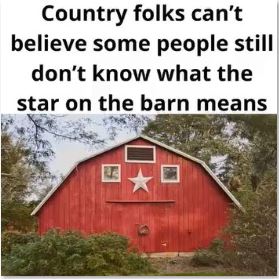
If you’ve ever driven past a farmhouse or country road, you’ve likely seen a large, five-pointed star displayed on a barn or above a doorway. Weathered by time and sunlight, these stars are more than just rustic decoration — they carry a long history of meaning, tradition, and pride deeply rooted in rural America.
Often called barn stars, Amish stars, or hex signs, these symbols date back to the 18th and 19th centuries. Pennsylvania Dutch farmers — descendants of German settlers — believed the stars brought good fortune and protection to their land, livestock, and families. Each color carried specific symbolism: red represented luck and passion, blue symbolized peace and harmony, green stood for growth and fertility, black offered protection, and white reflected purity and faith. The star’s intricate designs often blended geometric and spiritual elements, resembling hand-painted mandalas that told stories of hope and identity.
Beyond their spiritual meaning, barn stars also became a mark of craftsmanship and family pride. Farmers often personalized them to reflect their heritage or to distinguish their property within tight-knit rural communities. The practice eventually spread across regions, evolving into both a cultural and artistic tradition.
Today, barn stars continue to appear on homes, sheds, and gardens far beyond the countryside. Though most people now display them as charming Americana décor, they still carry echoes of their origins — symbols of resilience, luck, and belonging. The next time you spot one, remember: that simple star isn’t just decoration. It’s a quiet reminder of faith, hard work, and the enduring stories that shaped generations before us.